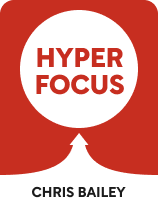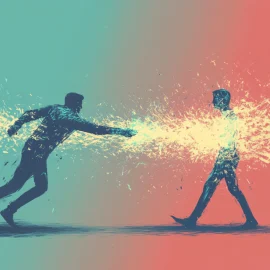

This article is an excerpt from the Shortform book guide to "Hyperfocus" by Chris Bailey. Shortform has the world's best summaries and analyses of books you should be reading.
Like this article? Sign up for a free trial here .
Do you struggle to keep distractions at bay? What can you do to limit distractions so you can focus for longer?
It’s hard to resist distractions, but they take away from productivity. So, limiting distractions is essential for prolonged focus on a single task. Productivity expert Chris Bailey offers insights on where to start: identify what distractions you can and can’t control.
Here are the details on the first step you should take when dealing with distractions.
Dealing With Distractions
How, exactly, can you effectively limit distractions? Bailey suggests that just knowing how often you get distracted will help you reduce these distractions: Once you know the extent of the problem, you’ll be more motivated to fix it. So, the first step to effectively dealing with distractions is to know what distractions you can and can’t control.
Dealing With Distractions You Can’t Control
All of us face distractions we have no control over. So, Bailey recommends the following strategy: When you encounter a distraction you can’t control, don’t forget your original purpose. That way, you can return to your original purpose as soon as the distraction goes away. This should be easy for unenjoyable distractions, like loud colleagues. But it may be more difficult if you’re enjoying the distraction—such as if you receive a call from a loved one. In this case, Bailey recommends letting yourself enjoy the distraction but urges you to remember your original goal. (Bailey admits that given his focus on productivity, even the enjoyable distractions annoy him because he dislikes interruptions to his schedule. So this suggestion may not be as helpful if you’re more flexible and already enjoying the distraction.)
| Shortform Exclusive: Other Strategies for Dealing With Distractions You Can’t Control Bailey’s strategy makes sense at first glance. But a closer examination of his suggestions reveals two inconsistencies in his reasoning. First, all of Bailey’s examples of distractions you can’t control are controllable to some extent. His unenjoyable examples include “office visitors, loud colleagues, and meetings.” However, you can schedule your hyperfocus sessions around meetings and office visitors or ask loud colleagues to keep it down. Similarly, Bailey lists “team lunches, calls from loved ones, and watercooler conversations“ as enjoyable distractions you can control. However, you can schedule your hyperfocus sessions around team lunches, ask loved ones not to call you at work, and not take part in watercooler conversations if you’re busy hyperfocusing. Second, one of Bailey’s major arguments is that paying full attention to whatever you’re currently doing is a critical element of making that task or interaction meaningful. How can you do that if you’re mulling over a task in the back of your mind? Consider the following strategies instead. #1: Control what you can. The fact that you can control at least some element of all of Bailey’s supposedly unavoidable distractions suggests that you can probably control some element of most distractions that seem initially unavoidable. So evaluate your distractions appropriately. You might not be able to eliminate something totally, but can you reduce its effect in some way? For example, you might think you can’t hyperfocus regularly because your boss talks to you all the time. But Indistractable recommends “timeboxing,” or creating a schedule with blocks of time dedicated to specific activities—and author Nir Eyal suggested in our interview that you could show your boss your timeboxed schedule in advance and ask her if it’s appropriate to your task. So through creativity and collaboration, you may be able to reduce the toll of seemingly unavoidable distractions. #2: Reschedule your hyperfocus session. You can avoid many of Bailey’s supposedly unavoidable distractions by not scheduling your hyperfocus sessions when you expect them to happen. But what if you begin a hyperfocus session and then encounter an unexpected distraction—such as your boss calling an impromptu meeting? If you followed Bailey’s suggestion, you’d only partly pay attention to the meeting. But you wouldn’t be as engaged as you normally were, so you wouldn’t extract as much benefit from the meeting. Why not reschedule your hyperfocus session? This may be frustrating and initially annoying—but it’s probably better than only paying half of your attention to a potentially important task. #3: Convince people not to bother you. If, like Bailey, the distractions you find difficult to control mostly involve other people, convince them not to bother you during hyperfocus in the first place. One simple way to do that is to politely set boundaries—like asking your loved ones not to call you at work. Another technique is to hyperfocus consistently until it affects your reputation. Once your coworkers expect you to single-task and know that you’re rarely distracted, they may respect this part of your identity more and think twice about bothering you. |
Dealing With Distractions You Can Control
To deal with distractions you can control, Bailey recommends that you limit distractions before you start trying to hyperfocus.
This method works around your biological limitations: As we’ve seen, your brain resists hard tasks by looking for more interesting stimuli. Therefore, Bailey argues, your brain finds distractions most tempting when you’re resisting a complex task—like when you start trying to hyperfocus. So to deal with distractions after you start trying to hyperfocus is to fight a losing battle: Resisting distractions at that time requires even more willpower and energy than normal. So you’re less likely to successfully resist the distraction.
Avoid this cycle altogether by dealing with potential distractions prior to starting a hard task—in other words, before they become extra-tempting—so that you have more willpower and energy to devote to creating a more productive environment in which to work.
(Shortform note: If your brain resists hard tasks so much, then why is it able to perform them at all? The Willpower Instinct explains more: Most of us have what scientists call “one brain but two minds.” One mind caters to immediate gratification. This is the part of your brain that resists the hard tasks. The other mind delays gratification in the interest of achieving long-term goals. This is the part of your brain that resists distraction. Our prefrontal cortex, which is responsible for self-control struggles to keep us focused on the long game (or the hard task), but if we feel tired, stressed, or even mildly intoxicated, we tend to give in to immediate gratification—like distractions.)
But what specific techniques should you use?
Bailey divides his techniques based on whether you use them in distraction-free mode or reduced-distraction mode. In distraction-free mode, you remove all potential distractions and become totally unavailable to the people you work with. In this mode, you hyperfocus on your most complex tasks. In reduced-distraction mode, you work on tasks you don’t need to hyperfocus on—such as tasks that require occasional collaboration with others. Reduced-distraction mode isn’t a setup for hyperfocus; rather, the point is to limit the productivity costs of distractions.
We’ve eliminated this division for two main reasons: First, both modes involve limiting your distractions to a far greater degree than you do now—so many of the techniques are similar, if not identical. Second, Bailey’s description of distraction-free mode implies that you must have total control over both your environment and your availability to coworkers in order to hyperfocus. But having complete control over your environment isn’t feasible for most knowledge workers. For example, Bailey describes how Sevenly CEO Dale Partridge implemented “distraction-free mode” on his team: He had each employee turn on a specific lamp to indicate when they were unavailable. This technique only works if other employees can see your lamp—so Sevenly likely had an open-office plan, which is not an environment you can control. (Shortform note: Partridge was also famously pro open-office.)
Instead, we’ve combined Bailey’s methods into the various strategies you can use to limit distractions to the furthest extent possible—a strategy that will improve your ability to hyperfocus (and improve your productivity whether you’re hyperfocusing or not). After all, Bailey notes, true productivity is the ability to work on your intended goal within your personal limitations.
Bailey admits that some of these strategies seem initially annoying because they take a few extra minutes. However, he argues that this is worth it because no single strategy should take 20 minutes—the average amount of productive time a single distraction costs. (Shortform note: Atomic Habits imagines these initially annoying strategies as “decisive moments”—by making one decision, you start a chain reaction and limit the options your future self has to choose from. It describes three types: the two-minute rule, commitment devices, and one-time actions.)
Additionally, Bailey admits that following many of these strategies could negatively impact your social life at work—so weigh your productivity benefits against what would happen if you were unavailable.
To do so, realistically assess the potential impact of your unavailability. For example, If you eat lunch with your coworkers every day, they’ll probably become annoyed if you stop going every day. But if that lunch eats into your work time, reducing the number of outings is reasonable.
| How to Balance Hyperfocus and Your Social Life When you’re assessing what would happen if you were unavailable, don’t forget about the second- and third-order consequences. For example, deliberately reducing your interactions with your gossipy coworker might have immediate productivity benefits. But if that’s the main way you stay in touch with office happenings, you might miss crucial information—like rumors of potential layoffs that make you remind your boss of your recent contributions. If you’re worried hyperfocusing will have too big an impact on your social life, think about how to incorporate hyperfocus into it instead. For example, you could suggest hyperfocusing to a coworker and make each other your accountability buddies to help you sustain a hyperfocus habit. This may be especially helpful if you are better at meeting expectations set by others than you are at meeting your own. |

———End of Preview———
Like what you just read? Read the rest of the world's best book summary and analysis of Chris Bailey's "Hyperfocus" at Shortform .
Here's what you'll find in our full Hyperfocus summary :
- Why it's just as important to learn how to manage your attention, along with your time
- Why you still feel tired no matter how many breaks you take
- Strategies for managing your attention for better productivity and creativity






